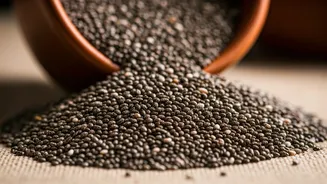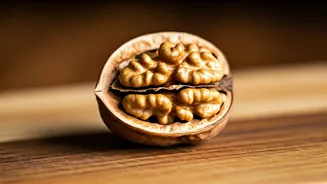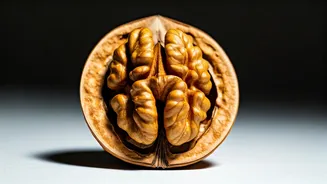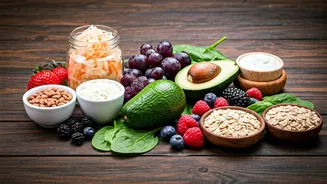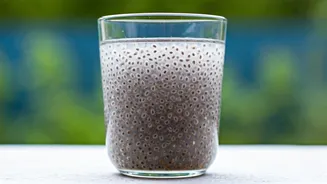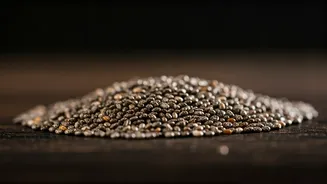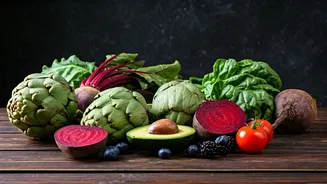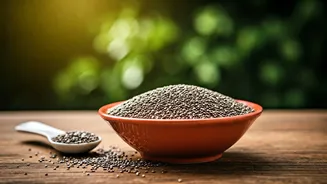Chia Seeds: Basics
Chia seeds, small black or white seeds, have gained significant popularity due to their remarkable health benefits. These seeds are derived from the Salvia
hispanica plant, a member of the mint family, and have been a staple in various cultures for centuries. Packed with essential nutrients, including fiber, omega-3 fatty acids, and antioxidants, chia seeds are a nutritional powerhouse. Their versatility allows them to be incorporated into numerous dishes, from breakfast cereals and smoothies to salads and baked goods. Chia seeds' ability to absorb water and form a gel-like substance makes them an excellent addition to recipes, offering a unique texture and enhancing satiety.
Step 1: Preparation
The initial step in harnessing the anti-inflammatory properties of chia seeds involves proper preparation. Start by taking a tablespoon or two of chia seeds and soaking them in water, almond milk, or your preferred liquid for about 10-15 minutes. This process allows the seeds to absorb the liquid, forming a gel-like consistency. The resulting gel enhances digestion and makes them easier for your body to process. This simple soaking step also helps to unlock the nutrients more effectively. You can soak them overnight in the refrigerator for added convenience. This step transforms the seed from its dry form into a more digestible and beneficial food component.
Step 2: Combining Ingredients
Once the chia seeds have formed a gel, the next step involves combining them with other ingredients that amplify their anti-inflammatory effects. Incorporate ingredients like turmeric, known for its curcumin content, a potent anti-inflammatory compound. Add a pinch of black pepper, which helps enhance curcumin absorption. Include other ingredients such as ginger, rich in gingerol, which also possesses anti-inflammatory properties. Furthermore, adding berries or other fruits rich in antioxidants helps to neutralize free radicals and further reduce inflammation. The combination of these ingredients boosts the effectiveness of chia seeds and provides a holistic approach to fighting inflammation.
Step 3: Creating a Meal
With your ingredients combined, it is time to turn them into an enjoyable meal. You can use this mix in various ways, like adding the chia seed mixture to a smoothie blended with fruits, vegetables, and other ingredients. Another option is incorporating the chia seed gel into a breakfast bowl with oatmeal, yogurt, and other toppings. You can also mix it into your salads or use it as a base for puddings. The versatility of the chia seed mixture lets you experiment with different flavors and textures, ensuring you enjoy the anti-inflammatory benefits in a way that suits your taste preferences and dietary needs. Making it a regular part of your diet becomes effortless.
Step 4: Regular Consumption
Consistency is crucial when fighting inflammation with chia seeds. Consume your chia seed mixture regularly, preferably every day, to reap its benefits. Integrating this into your daily routine helps maintain a steady supply of nutrients and antioxidants, reducing inflammation over time. It is essential to listen to your body and adjust the intake based on your individual needs and tolerance. Start with a smaller amount and gradually increase it as your body adapts. Remember, a balanced diet is always the best approach. Combined with other healthy habits, such as regular exercise and adequate sleep, chia seeds can contribute significantly to overall well-being and a healthier lifestyle. The benefits of chia seeds are realized with continuous and consistent intake.
Step 5: Monitoring Health
The final step involves observing and monitoring your health. Keep track of how your body responds to the regular intake of chia seeds. Pay attention to any improvements in inflammation-related symptoms, such as joint pain or digestive issues. You might experience increased energy levels and improved skin health. Regular monitoring helps to identify how effectively chia seeds are working for you. Keep a food diary to note any changes you notice in your body. It is always wise to consult a healthcare professional. Tracking your health will allow you to adjust your intake accordingly to maximize the anti-inflammatory benefits of chia seeds and achieve optimal health.
